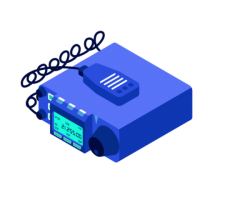Ham radio operators across the US are preparing for the annual Field Day event in June. Field Day 2023 will be held Saturday June 24 into Sunday June 25. The ARRL is the sponsor of Field Day in the US. They say, “Field Day is a picnic, a campout, practice for emergencies, an informal contest and, most of all, FUN!”

The annual Field Day is a three-in-one style event. First Field Day is an emergency communications exercise. It also has elements of a “Parks on the Air” style contest. Wrap both of those in a part, “club picnic and operating demonstration” and you have Field Day. Ham radio is tasked to provide communication when other communications services are out. An annual practice session is important to help ensure off-grid operating readiness. During the event, ham radio operators set up temporary stations in public places. Once in place they attempt to make as many “contacts” with other stations as possible over a 24-hour period.

To help make it interesting, the sponsor sets up a contest based atmosphere. This lets hams challenge for the most contacts in 24 hours. They are also trying to attract the most interest from the general public. The spirit of Field Day for many clubs is social. Clubs often have food, music, and activities to entertain participants throughout the day.

This year’s event is expected to draw thousands of participants. Operators can choose to use their own stations or join in with other clubs and groups. Hearing someone operating as a single station is as typical as hearing a group with 8 stations on the air from a park.
The event is also a chance for new operators to get involved and learn more about the hobby. It’s a terrific way to a new ham to find a club or get their first chance to try their hand at HF operating. The ARRL hosts a Field Day Locator to find groups set up in your area: http://www.arrl.org/field-day-locator.

If you are operating on your own you will need to be familiar with a few rules. The ARRL Field Day page covers the key items you will need to know. This includes your “exchange” which is the number of transmitters and power type in use. For instance a club with three stations using batteries would be “3A” or “Three-Alpha.” A single home station using traditional power is coded “1D” or “One-Delta.” You’ll also need to know your ARRL section abbreviation, like “ENY” for Eastern New York or “WTX” for West Texas. You’ll give that in reply with a signal report as part of your on-air exchange. For instance our club station would give the exchange “AA1RC – Two Alpha – Golf Alpha” which is AA1RC, 2A, Georgia.
You don’t have to submit a log to operate in Field Day, just figure out your exchange and get on the air. If you do decide to send in an entry, check out the ARRL Field Day site at http://www.arrl.org/field-day. You can find tips and opportunities for bonus points. Those can be for added stations, messages sent and received, and inviting local officials.












